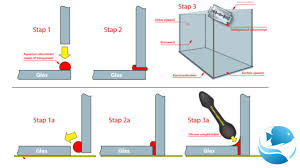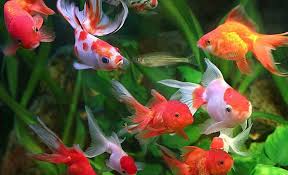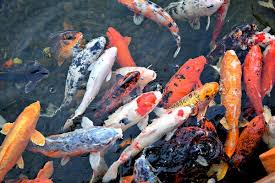Ornamental fishes are attractive, colorful species with peaceful temperaments, often kept as pets in aquariums or garden pools. These fish are kept primarily for enjoyment and admiration.
An aquarium is a container designed to display aquatic organisms in a simulated natural environment, with aquatic plants, rocks, gravel, and artificial decorations. To maintain proper conditions, aquariums utilize equipment that regulates aeration, water movement, temperature, organic matter suspension, illumination, and feeding.
Read Also: 5 Amazing Health Benefits of Triphala (Three fruits)
Step-by-Step Aquarium Construction

- Put the Growth Substrate (2 cm).
- Add the Gravel (3-4 cm).
- Place Decorations such as the Granite Cave and Moss Wall.
- Fill with Water up to the middle of the aquarium.
- Plant the Aquatic Plants.
- Install the Heater in the corner at the back of the aquarium (some aquariums on the market come with heaters included) and a thermometer.
- Place the Aquarium Filter. (Detailed steps for building the filter will follow.)
- Fill the Tank with the Remaining Water.
- Install the Aquarium Lamp and AC Adapter. (Some aquariums come with lamps included.)
- Activate the Lighting, Filter, and Thermostat, and allow the aquarium to operate for at least 2-3 days.
Materials Used in Aquarium Construction
- Single-edged razor blades
- Acetone
- Non-toxic 100% silicone sealant
- Paper towels
- Washable felt-tip marker
- Duct tape
- Emery cloth or silicone carbide sandpaper
Read Also: How Guava Fruits and Leaves Improve Female Fertility
Different Types of Aquariums

1. Freshwater Tropical Aquariums: Freshwater tropical aquariums are the standard type in the hobby, with water temperatures typically ranging from 72-84°F. These aquariums are relatively easy to maintain, requiring only basic water conditioners, such as chlorine removers, and simple equipment. Freshwater tropical fish are generally more affordable than marine species.
2. Coldwater Aquariums: Coldwater aquariums maintain temperatures below 70°F or at room temperature in most homes. A common species in coldwater aquariums is the goldfish. Setting up a goldfish aquarium is simple, and proper equipment can extend the lifespan of these fish. While coldwater freshwater fish can be more expensive, especially non-goldfish species, koi and goldfish ponds are popular examples of these habitats.
3. Marine Aquariums: Marine aquariums require saltwater for the fish to thrive. Salt must be purchased and mixed with water before adding it to the tank. Marine tanks feature stunning fish, vibrant corals, and invertebrates, but they are usually more expensive than tropical freshwater specimens. The equipment needed, particularly for coral, also tends to be more costly.
4. Brackish Aquariums: Brackish water is a mix of freshwater and saltwater. This type of aquarium can be difficult to maintain due to the challenges in balancing water conditions. Brackish fish often struggle in home aquariums because they are not always housed properly before arriving at the hobbyist’s tank.
5. Aquarium Maintenance: Aquariums can be maintained by reducing stress on the fish, cycling the tank, performing periodic partial water changes, managing the filtration system, vacuuming the gravel, and feeding the fish appropriately.
6. Aquarium Keeping as a Hobby: The keeping of ornamental fish in aquariums has grown into a popular hobby, second only to photography worldwide. This is largely due to its immense economic potential and widespread appeal.
Do you have any questions, suggestions, or contributions? If so, please feel free to use the comment box below to share your thoughts. We also encourage you to kindly share this information with others who might benefit from it. Since we can’t reach everyone at once, we truly appreciate your help in spreading the word. Thank you so much for your support and for sharing!
Read Also: The Effect of Solid Waste on Business Environments

